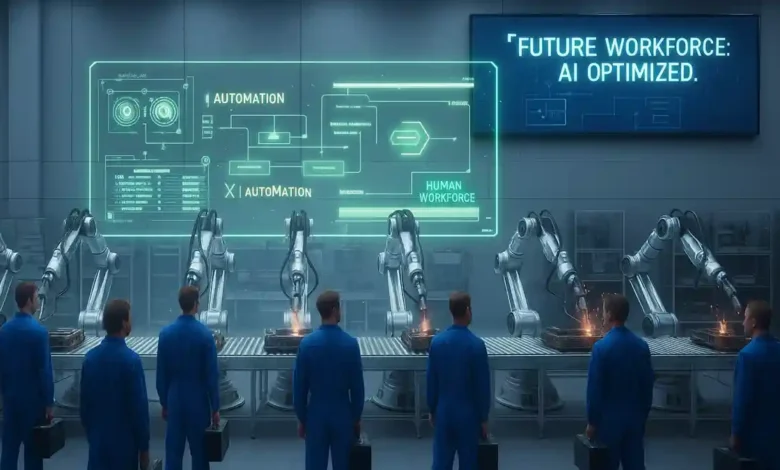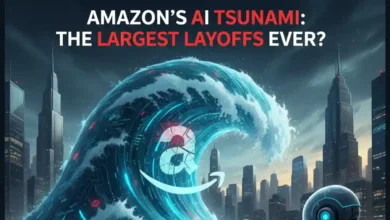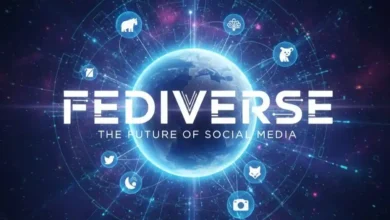The AI Job Apocalypse: How Agentic AI is Poised to Replace Human Workers

Imagine waking up in 2030 to find your inbox flooded not with emails from colleagues, but with automated reports from AI agents that have already analyzed the market, drafted your strategy, and even negotiated with clients. Your role? Overseeing the oversight. Sound like science fiction? It’s the accelerating reality of agentic AI – autonomous systems that don’t just assist but act, decide, and execute with human-like agency. As we stand on the precipice of this transformation in September 2025, one burning question looms: Will AI replace human workers en masse, or will it redefine work itself? In this deep dive, we’ll unpack how agentic AI is targeting the most vulnerable fields, dissect its seismic global impacts on society and the economy, and challenge you to rethink your career trajectory. Buckle up – the future of work isn’t coming; it’s already here.
What is Agentic AI, and Why It’s the Game-Changer in Job Automation?
Before we dive into the doom and gloom of displacement, let’s clarify the culprit: agentic AI. Unlike traditional AI tools that crunch numbers or generate text on command (think ChatGPT drafting an email), agentic AI operates with autonomy. These “digital agents” perceive their environment, set goals, make decisions, and take actions without constant human input. Picture an AI that doesn’t just recommend a hiring candidate but scans resumes, conducts virtual interviews, assesses cultural fit, and even drafts offer letters – all while learning from feedback loops to improve.
This shift from reactive to proactive intelligence is fueling unprecedented automation. According to McKinsey’s 2025 insights, agentic AI can handle complex, multi-step workflows that once required teams of humans, from IT troubleshooting to supply chain optimization. IBM’s report on agentic process automation echoes this, predicting it will elevate business operations by automating not just routine tasks but adaptive decision-making, potentially reshaping 30-40% of white-collar workflows by 2027.
Why does this matter for jobs? Agentic systems excel in environments with abundant data and repetitive decision points, turning human roles into supervisory ones – or eliminating them entirely. Harvard Business Review notes that these AIs are evolving from “sidekicks” to “digital teammates,” already infiltrating HR, where they automate recruitment and performance reviews with eerie accuracy. The result? A workforce where AI agents handle the grunt work, freeing humans for creativity… or forcing them to upskill or exit.
But not all jobs are created equal. Some sectors are veritable sitting ducks for this agentic onslaught. Let’s zero in on the most vulnerable.
The Most Vulnerable Fields: Sectors Where AI Replacement is Imminent
Agentic AI doesn’t discriminate – it disrupts based on exposure: how much of a job’s tasks involve predictable, data-driven decisions. PwC’s 2025 Global AI Jobs Barometer reveals that highly automatable roles in data-rich industries see productivity surges of 3x, but at the cost of human redundancy. Drawing from recent analyses, here’s a breakdown of the fields most at risk by 2030, ranked by projected displacement rates. These aren’t hypotheticals; they’re backed by labor market projections from sources like the World Economic Forum (WEF) and SSRN studies.
1. Customer Service and Administrative Support (80% Automation Risk by 2025)
- Why Vulnerable? Agentic AI thrives on conversational data. Tools like advanced chatbots (e.g., those powered by Grok or similar LLMs) now resolve 70-80% of queries autonomously, escalating only edge cases to humans.
- Impact Stats: SSRN’s 2025 AI Job Displacement Analysis forecasts 7.5 million data entry clerk jobs vanishing globally by 2027, with customer service reps leading at 80% automation. In the U.S. alone, 30% of workers in these roles fear obsolescence by year’s end.
- Real-World Example: Companies like Moveworks deploy agentic AI for self-service IT support, slashing ticket volumes by 50% and rendering entry-level helpdesk roles relics.
- Thought Provoker: If AI can empathize via sentiment analysis better than a fatigued call-center rep, what does that say about the “human touch” in service economies?
2. Legal and Compliance (44% Tasks Automatable)
- Why Vulnerable? Agentic systems excel at pattern recognition in contracts, regulations, and case law – tasks that consume 40-50% of lawyers’ time.
- Impact Stats: The U.S. Bureau of Labor Statistics (BLS) 2025 projections highlight legal professions with 44% exposure, potentially displacing 1.2 million roles worldwide by 2030. WEF’s Future of Jobs Report 2025 predicts 92 million total displacements, with legal admin hit hardest in developed nations.
- Real-World Example: Eightfold’s agentic HR AI already automates compliance checks in hiring, reducing manual reviews by 60%.
- Thought Provoker: As AI drafts ironclad contracts faster than any junior associate, will justice become a commodity code, or will humans retain the moral compass?
3. Finance and Accounting (35-50% Exposure)
- Why Vulnerable? Routine auditing, fraud detection, and forecasting are prime for agentic orchestration – AI agents that chain tasks like data aggregation, anomaly detection, and reporting.
- Impact Stats: Exploding Topics’ 2025 stats show finance roles among the top 10 at risk, with 20 million global jobs potentially automated by 2030. Young workers (22-25) in AI-exposed finance gigs have seen 6% employment drops since 2022.
- Real-World Example: Aura’s agentic systems manage financial workflows end-to-end, adapting to regulatory changes in real-time.
- Thought Provoker: When AI predicts market crashes with 95% accuracy, do we trust algorithms over human intuition – and at what cost to economic stability?
4. Manufacturing and Logistics (25-40% Automation)
- Why Vulnerable? Agentic AI integrates with robotics for end-to-end supply chain management, from inventory forecasting to predictive maintenance.
- Impact Stats: Oxford Economics warns of 20 million manufacturing jobs lost to robots and AI by 2030, concentrated in emerging markets. BLS data shows blue-collar roles in data-poor factories digitizing rapidly to catch up.
- Real-World Example: IBM’s agentic platforms orchestrate warehouse ops, reducing human oversight by 40%.
- Thought Provoker: In a world of AI-driven factories, will “made by humans” become a luxury label?
Fields Less at Risk: A Silver Lining?
Not all is bleak. Careerminds’ 2025 analysis flags healthcare providers, educators, skilled trades, and creative roles as resilient – AI complements here, augmenting diagnostics or lesson planning without full replacement. Yet, even these could see hybrid models emerge.
The Global Ripple Effects: AI’s Double-Edged Sword on Society and Economy
Agentic AI’s job shake-up isn’t confined to spreadsheets; it’s a tectonic shift with worldwide tremors. The IMF’s 2024-2025 outlook (updated for current trends) estimates AI will touch 40% of global jobs, displacing some while supercharging others – but outcomes hinge on policy.
Economic Impacts: Boom, Bust, or Both?
- Growth Acceleration: PwC data shows AI-exposed sectors growing revenue per employee 3x faster, potentially adding $15.7 trillion to global GDP by 2030. Brookings’ 2025 study confirms AI spurs firm innovation and employment in adaptive companies.
- Displacement Drag: WEF projects 75 million jobs lost by 2025, offset by 133 million new ones – a net gain, but skewed toward high-skill roles in tech hubs. Emerging economies face steeper hits: 69 million new jobs by 2028, but inequality widens without reskilling.
- Inequality Amplifier: Low-wage, routine jobs in the Global South (e.g., call centers in India) vanish first, while AI boosts wages 20-30% for skilled workers in the North. CBO’s 2024 analysis warns of wage polarization without intervention.
| Economic Metric | Projected 2025-2030 Impact | Source Insight |
|---|---|---|
| Global GDP Boost | +$15.7 Trillion | PwC Barometer |
| Net Job Creation | +58 Million (133M created – 75M displaced) | WEF Report |
| Wage Premium for AI-Skilled | +20-30% | IMF Analysis |
| Unemployment Spike in Vulnerable Sectors | +5-10% Short-Term | BLS Projections |
Societal Shifts: From Unemployment Lines to Universal Basic Income Debates
- Social Fabric Strain: 40% of employers plan workforce cuts via AI, per WEF, exacerbating youth unemployment (already 6% drops in exposed roles). This could fuel populism, mental health crises, and migration waves as displaced workers chase AI-proof gigs.
- Equity and Access Gaps: Women and minorities, overrepresented in admin roles, face disproportionate hits – unless inclusive upskilling bridges the divide. CIGI questions if society is ready, citing robot-induced job losses mirroring past industrial revolutions.
- The Upside Potential: McKinsey’s 2025 workplace report envisions “superagency,” where AI empowers humans for ethical oversight and innovation, creating 170 million roles in green tech and personalized services. But this demands proactive policies: reskilling programs, AI taxes, or UBI pilots.
Provocative Query: If AI agents generate more wealth than humans ever could, should we redistribute it – or let the market’s invisible hand crush the vulnerable?
Charting a Resilient Path: Strategies for Humans in an Agentic World
To thrive, workers must pivot: Embrace lifelong learning in AI literacy, hybrid skills (e.g., AI ethics for lawyers), and entrepreneurial mindsets. Policymakers? Invest in universal reskilling (à la Singapore’s model) and regulate agentic deployment for transparency. Businesses: Transition to “human-AI symbiosis,” as HBR urges, where agents augment, not annihilate.
Final Provocation: Humanity’s Next Chapter or Cautionary Tale?
Agentic AI isn’t a job thief – it’s a mirror reflecting our societal choices. By 2030, it could usher in an era of abundance, where work bends toward meaning over drudgery, or deepen divides in a world of haves and have-nots. The most vulnerable fields – from call centers to courtrooms – signal the urgency: Adapt or fade. What role will you play in scripting this story? Share your thoughts below – the AI revolution waits for no one.
For more Odinozz Tech articles, click here.
Follow Odinozz on social media. Click here.



